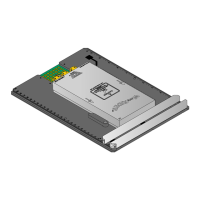WaveRIDER 181
APPENDIX E: WaveRIDER Accuracy and the Influencing Factors
There are two fundamental measurements the WaveRIDER measures: temperature
and time. The accuracy, resolution and range the WaveRIDER is capable of is stated in
the Specification section of the manual. The purpose of this paper is to show how these
specifications affect the solder machine parameters presented on the WaveRIDER
printout.
Time Specifications
Measurement time by the WaveRIDER is influenced more by the log rate rather then
the overall accuracy of the timer. The WaveRIDER takes data at a log rate of 0.1sec.
Thus every reading of time has a tolerance of ±0.1 second. The net effect on time
dependent variables is best illustrated on the graphs below.
Dwell Times
The % effect that ±0.1 seconds has on the measured dwell times decreases as the
dwell time increases. To determine the maximum error of dwell time measurements,
locate the measured dwell time on the X axis of the graph and run vertically to the
curve. Now run horizontally to the left and find the % error on the Y axis. Clearly the
maximum % error that 0.1 seconds has on the measured value increases dramatically
as your dwell times approach 0.1 seconds (100% error!), but practical dwell times run
from 2 to 5 seconds or 5% to 2% error respectively.
Conveyor Speed
The % effect that ±0.1 seconds has on the measured conveyor speed increases with
the actual conveyor speed. To determine the maximum error of conveyor speed
measurements, locate the measured speed (ft/min) on the X axis of the graph and run
vertically to the curve. Now run horizontally to the left and find the % error on the Y axis.
This is the maximum % error of actual conveyor speed you could expect to see. Typical
errors run at about 0.75% at 4ft/min.
Time measurement can be altered if there is one or more open T/C(s) on the
coupon.

